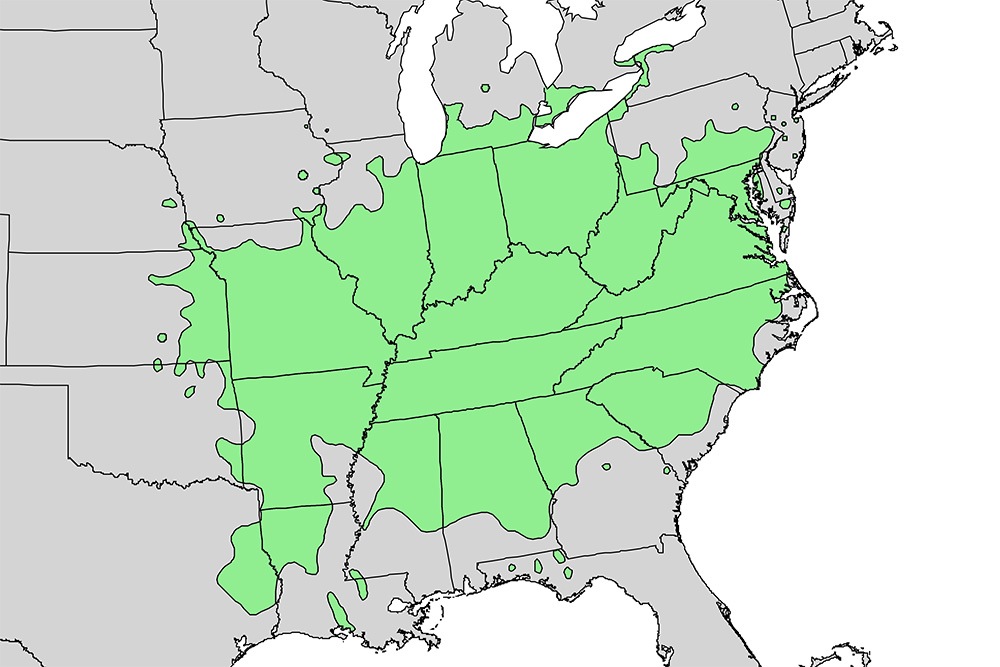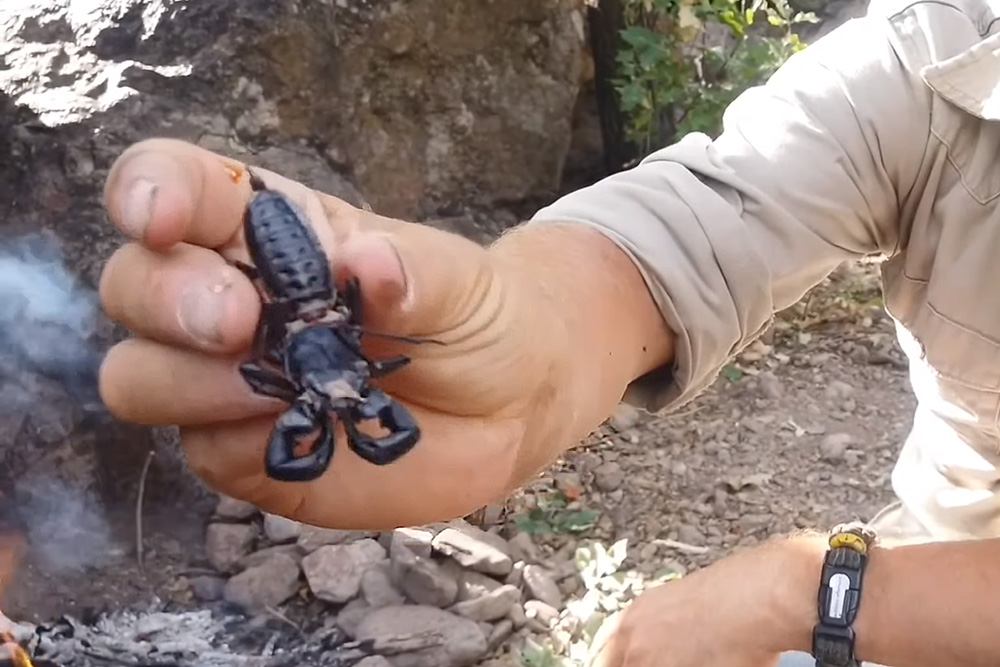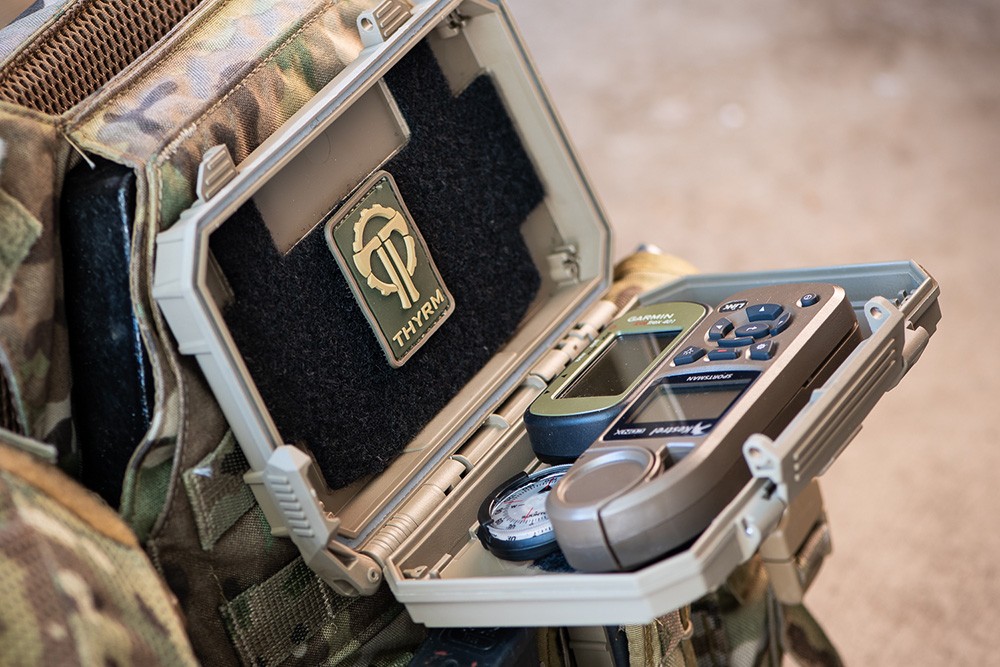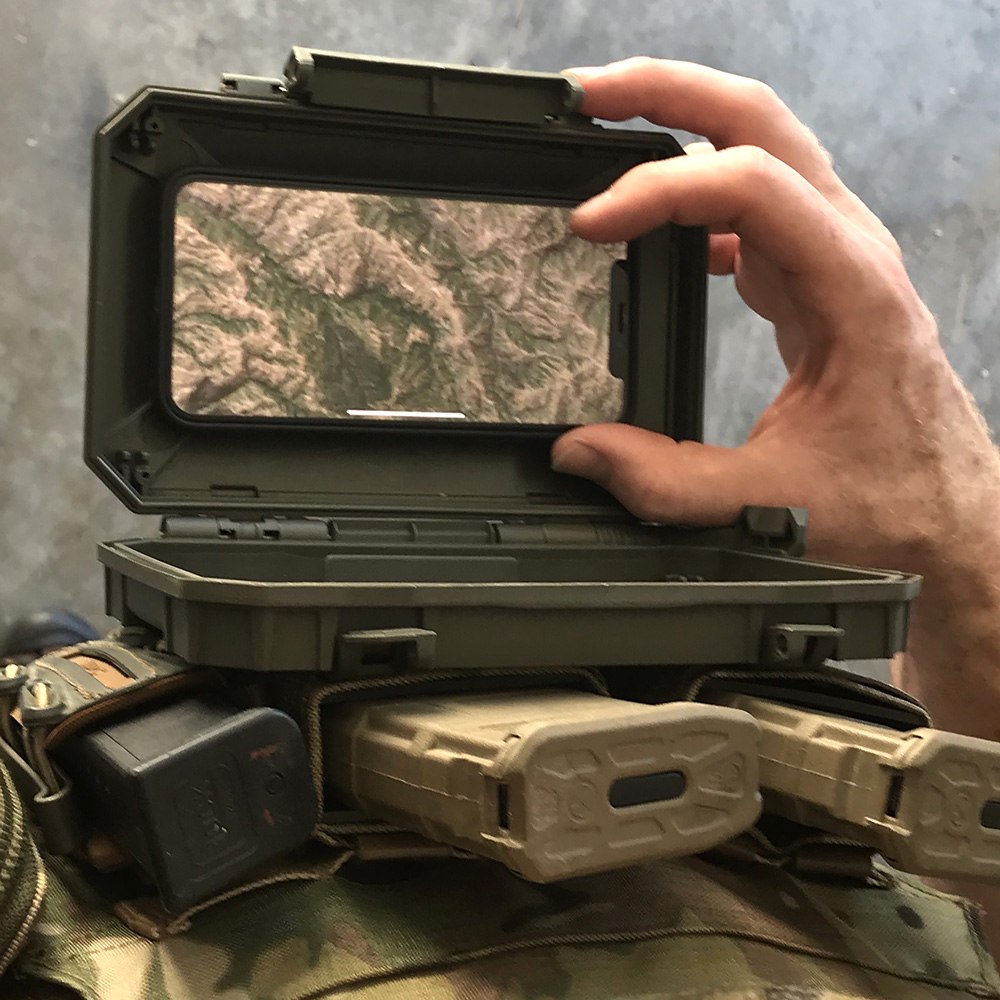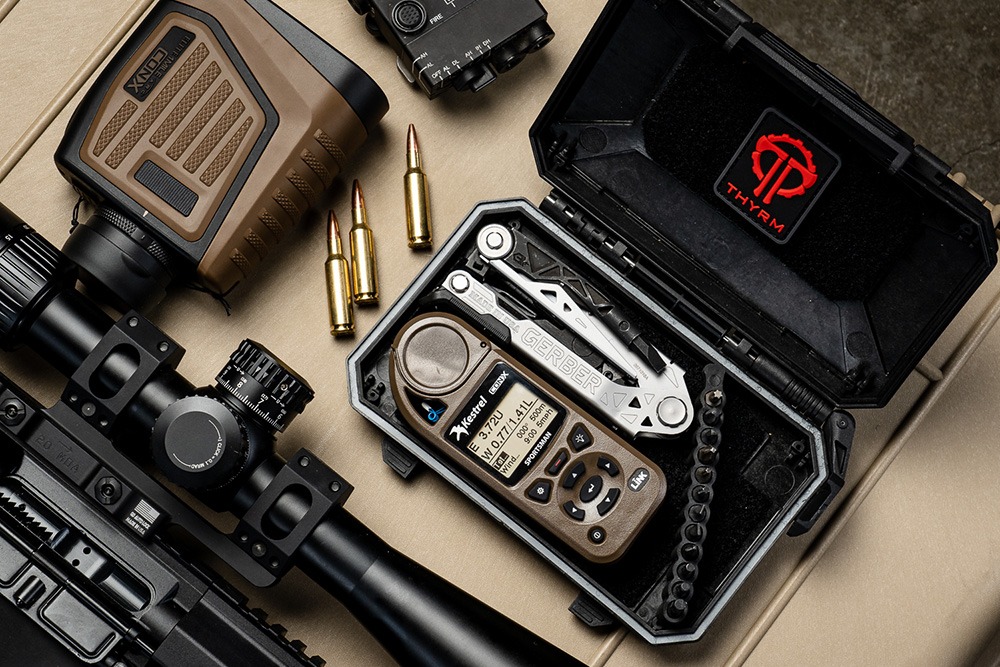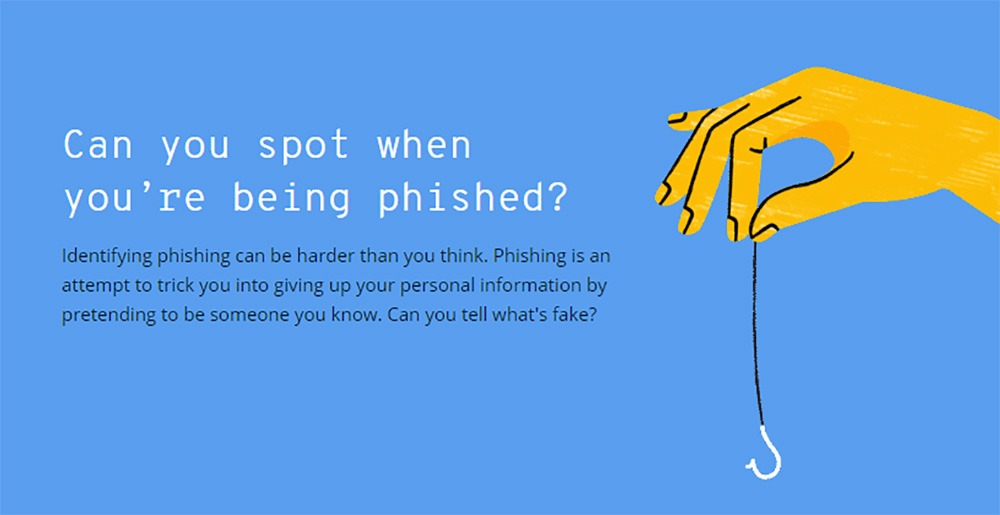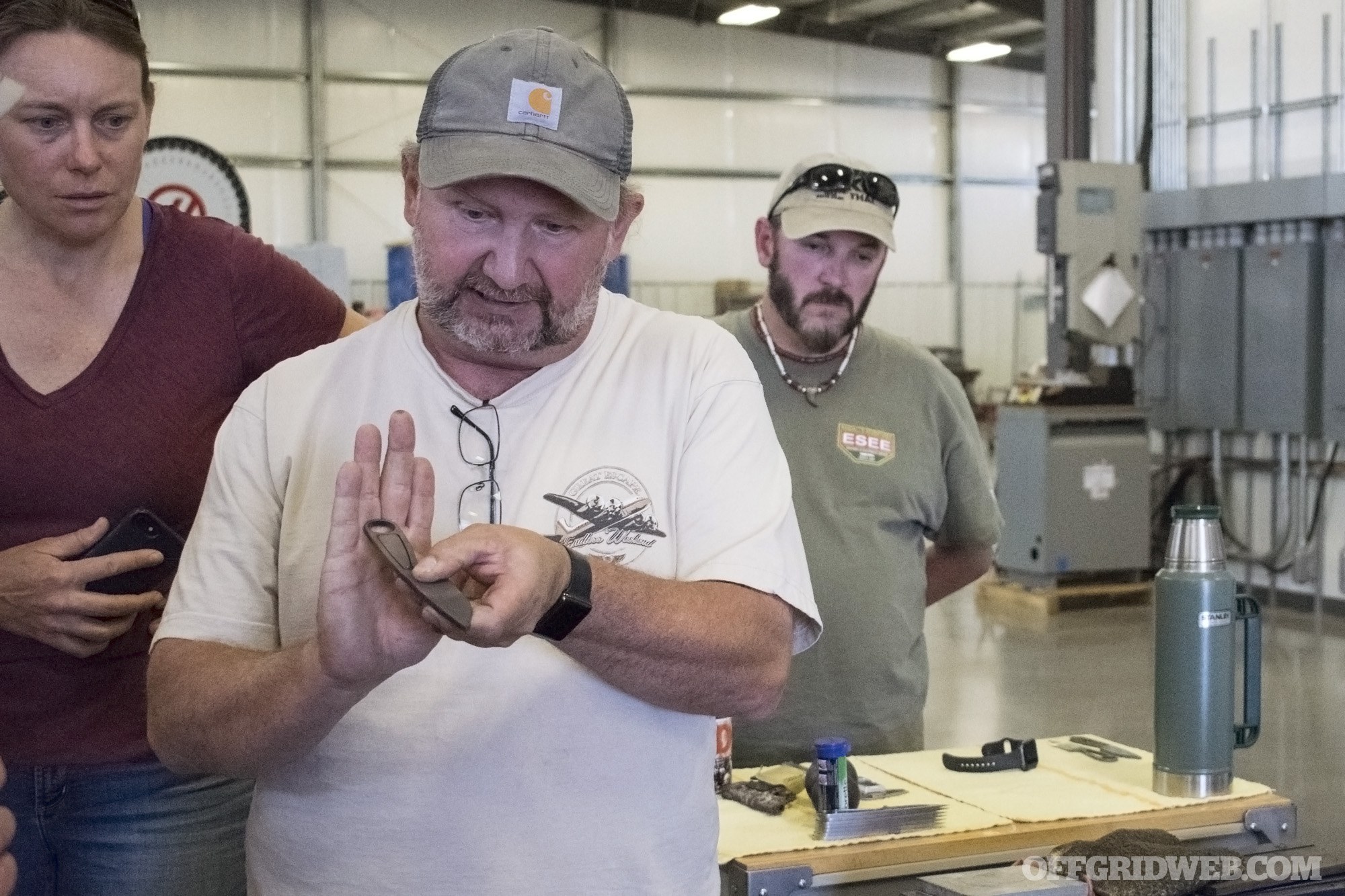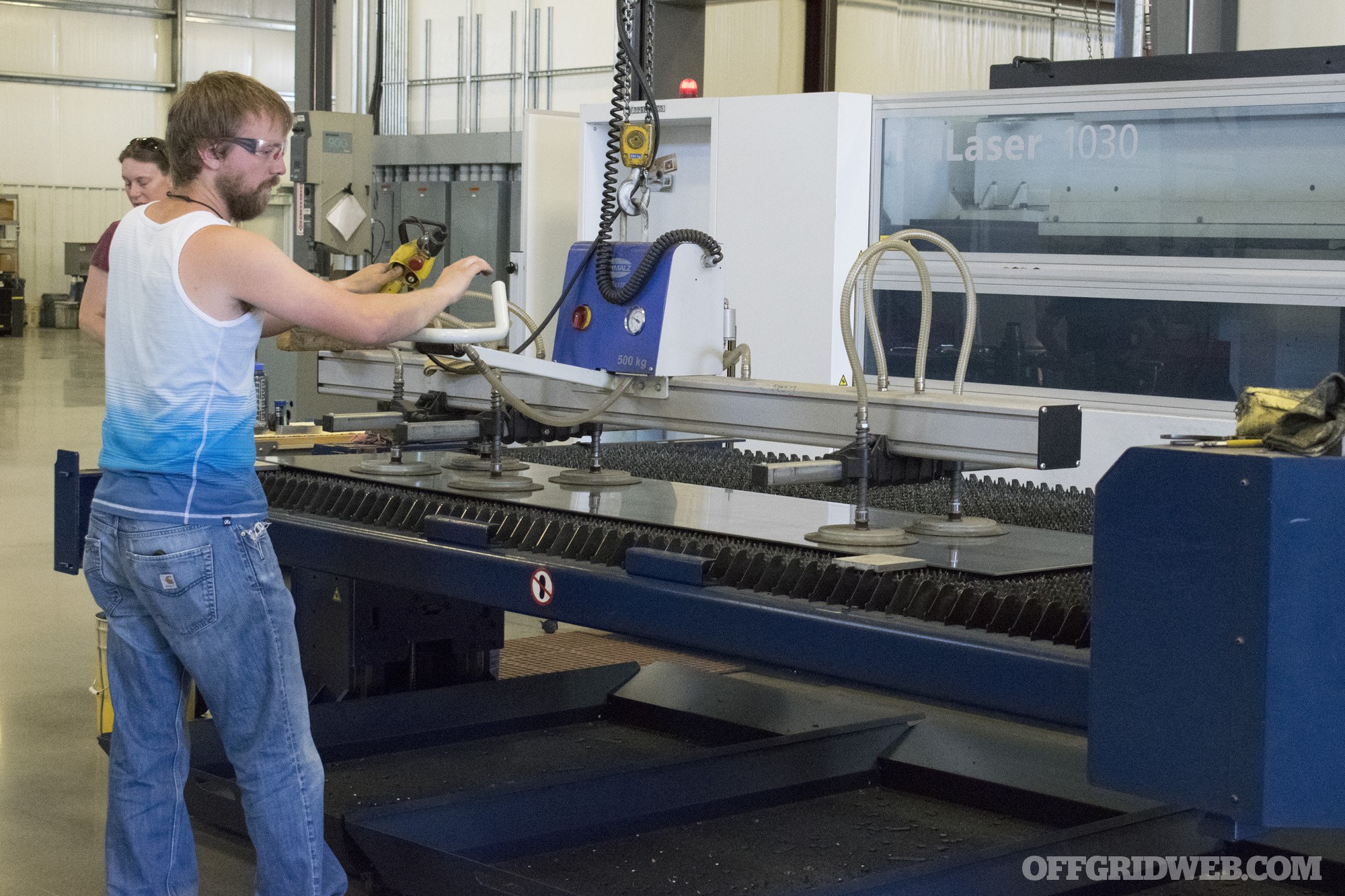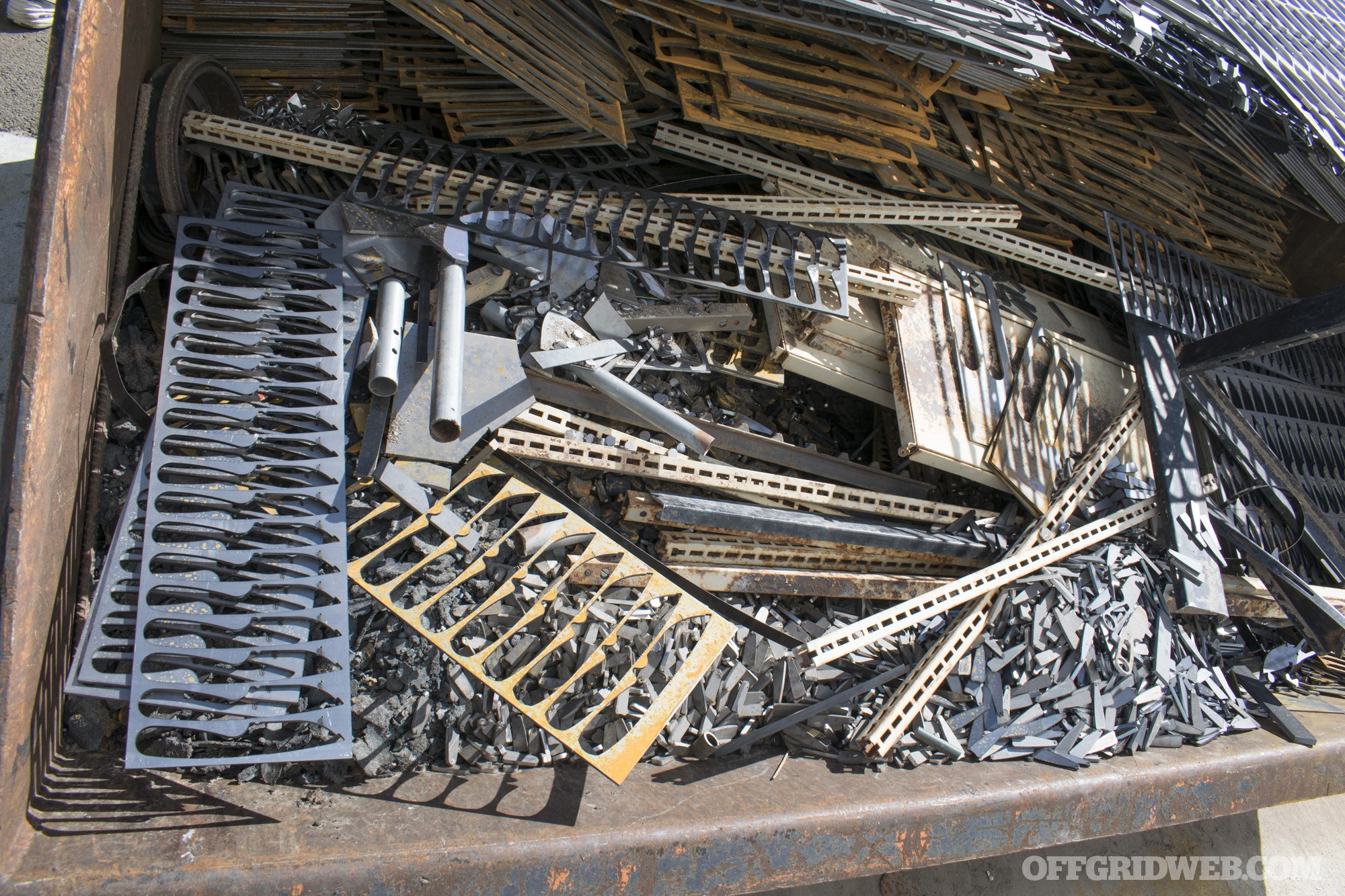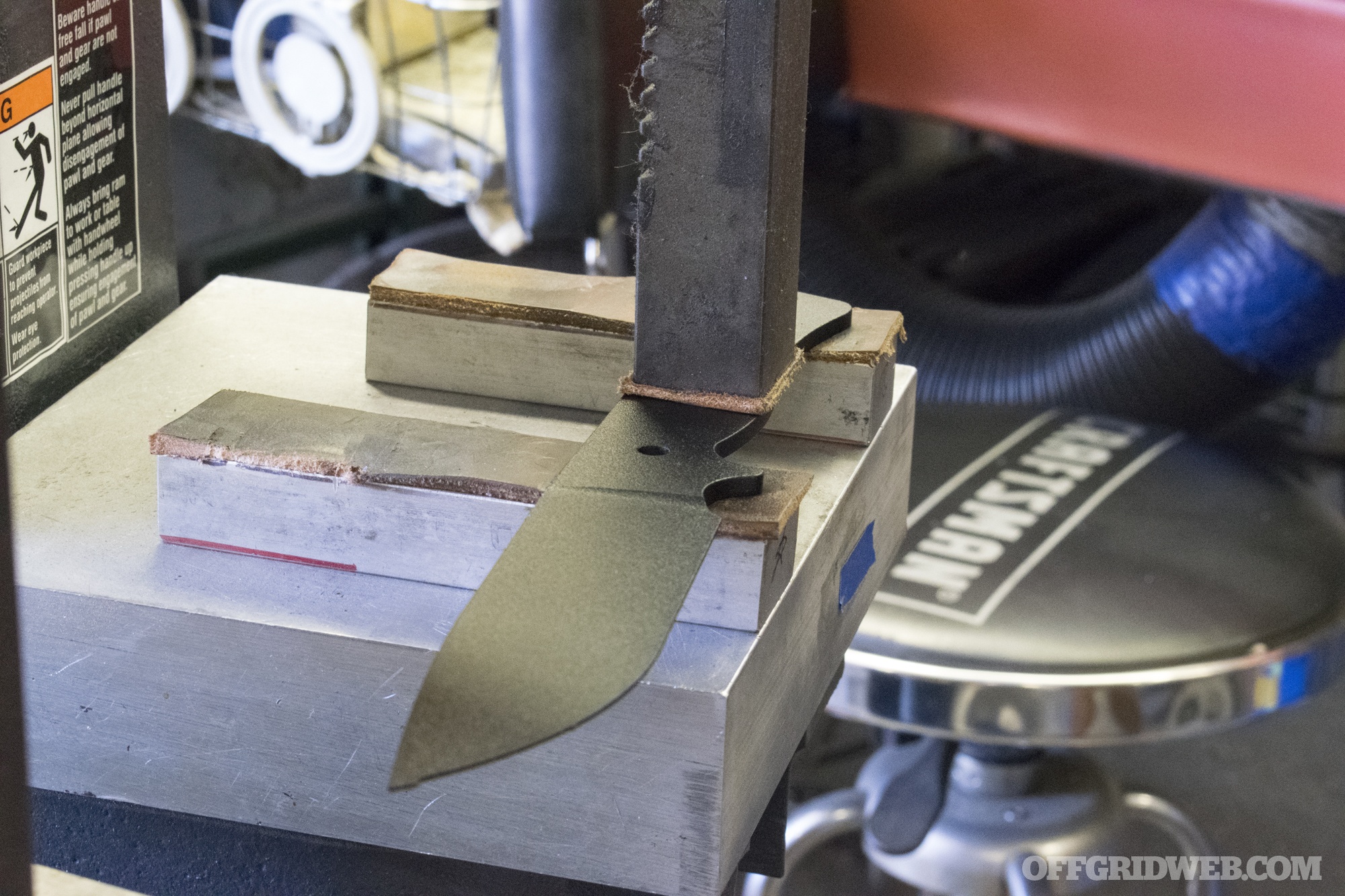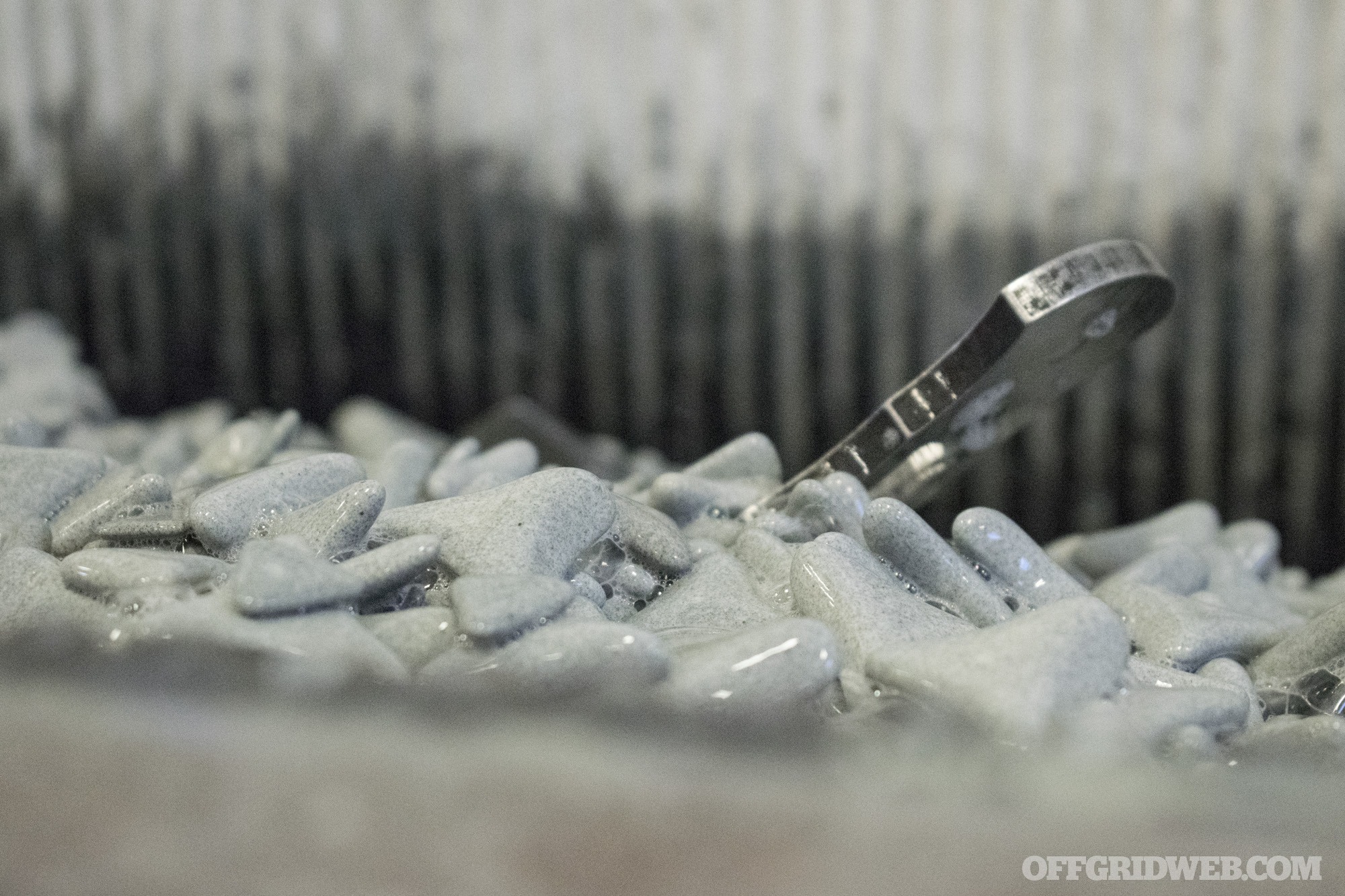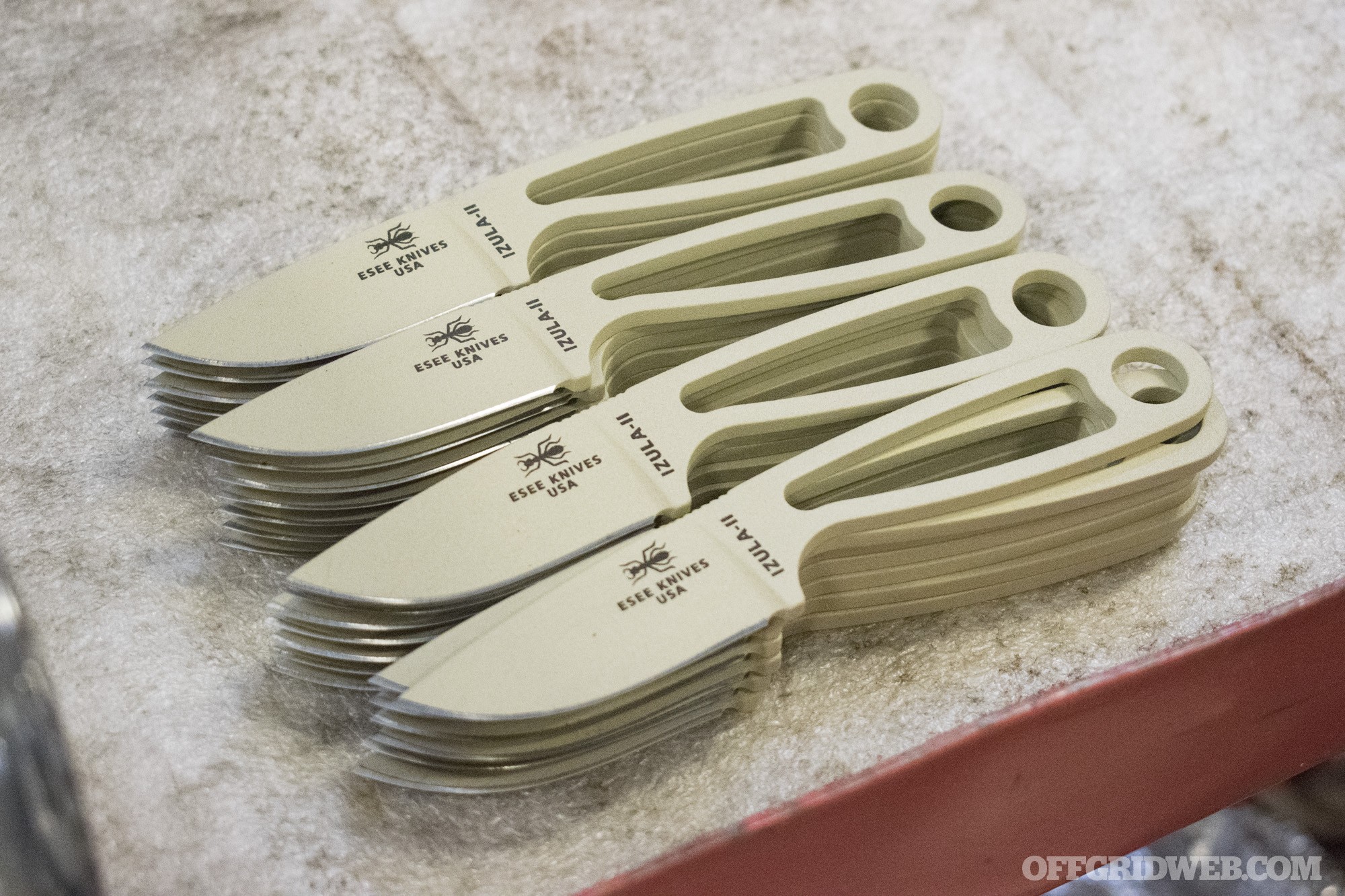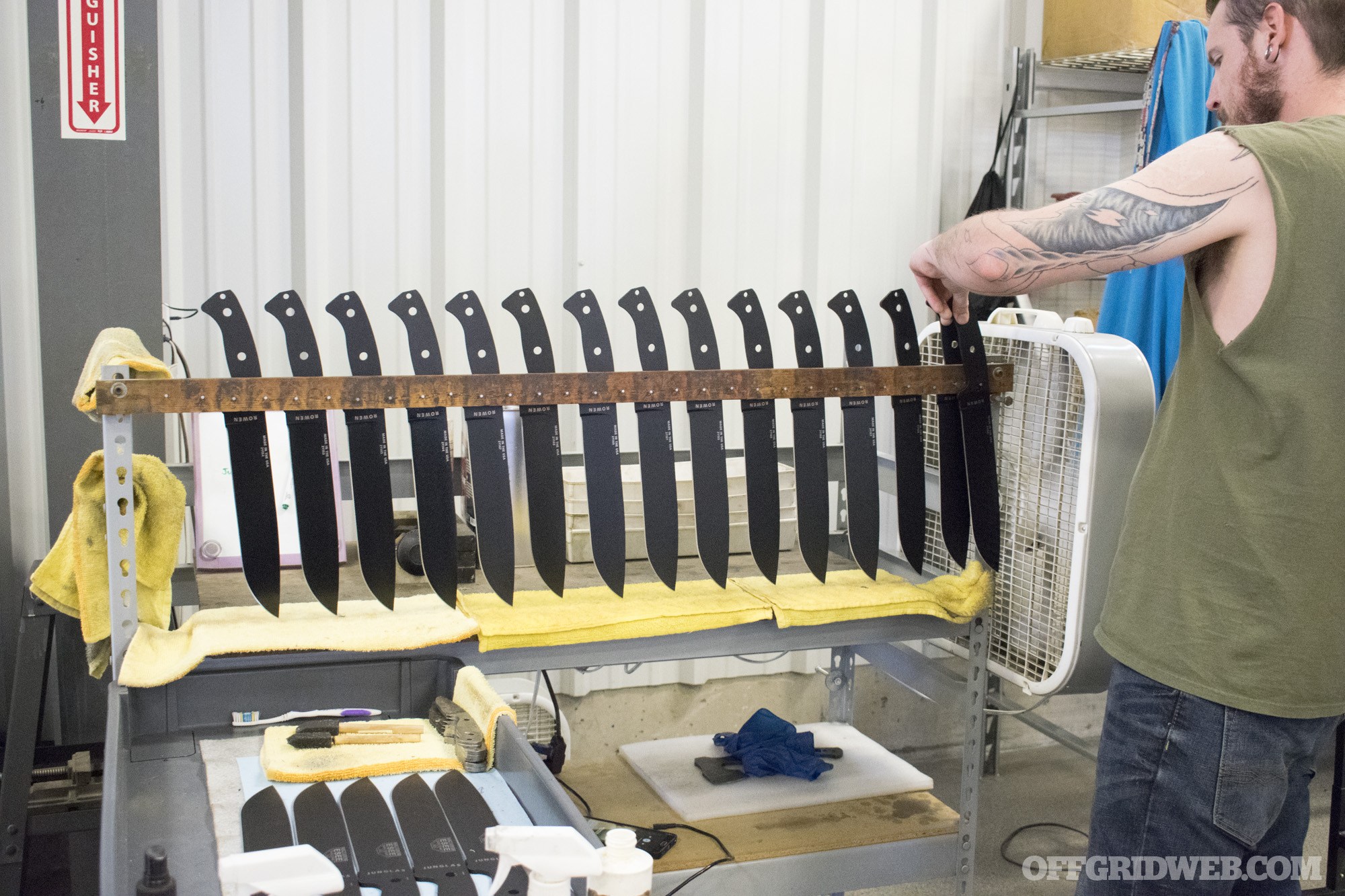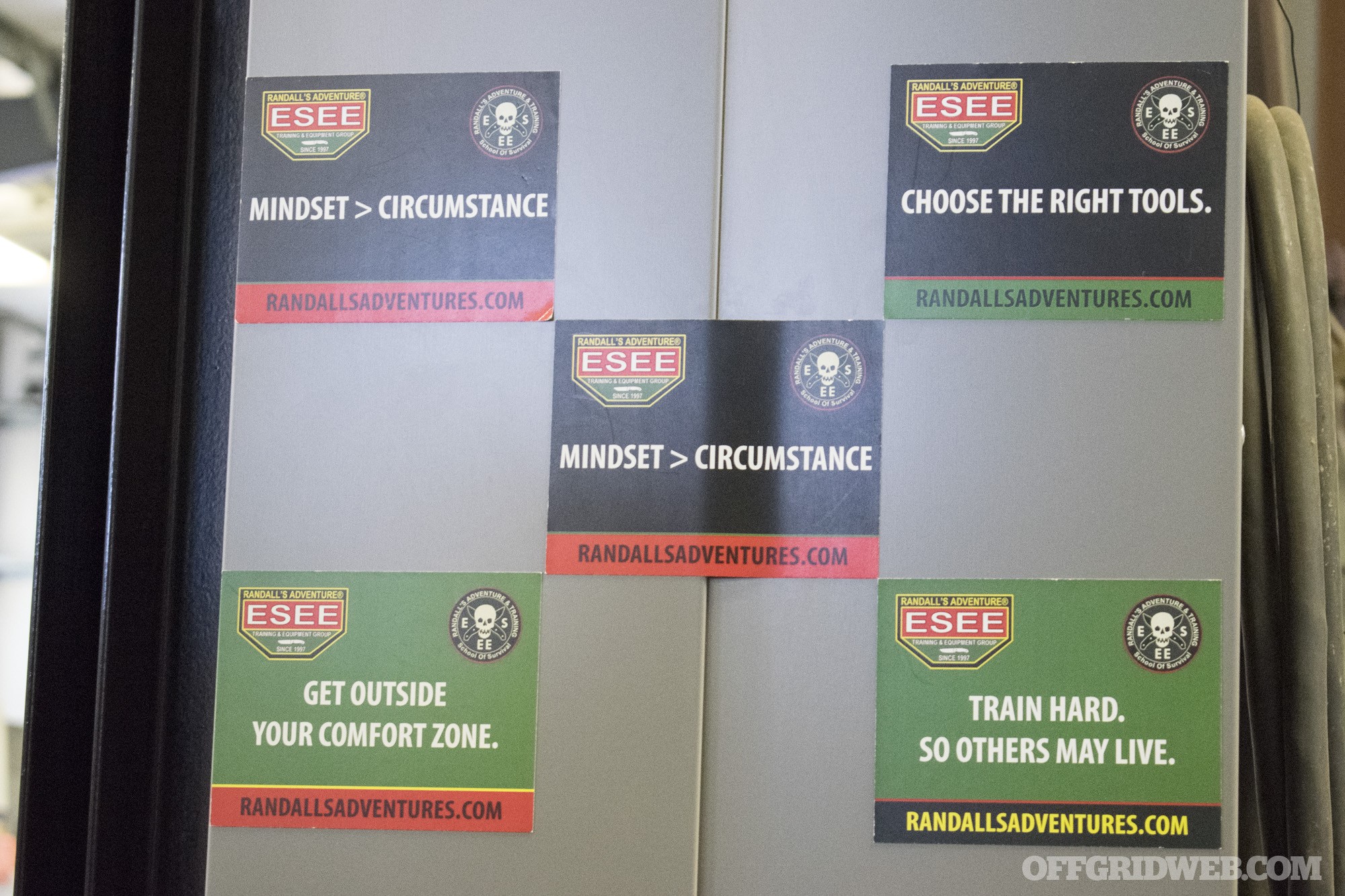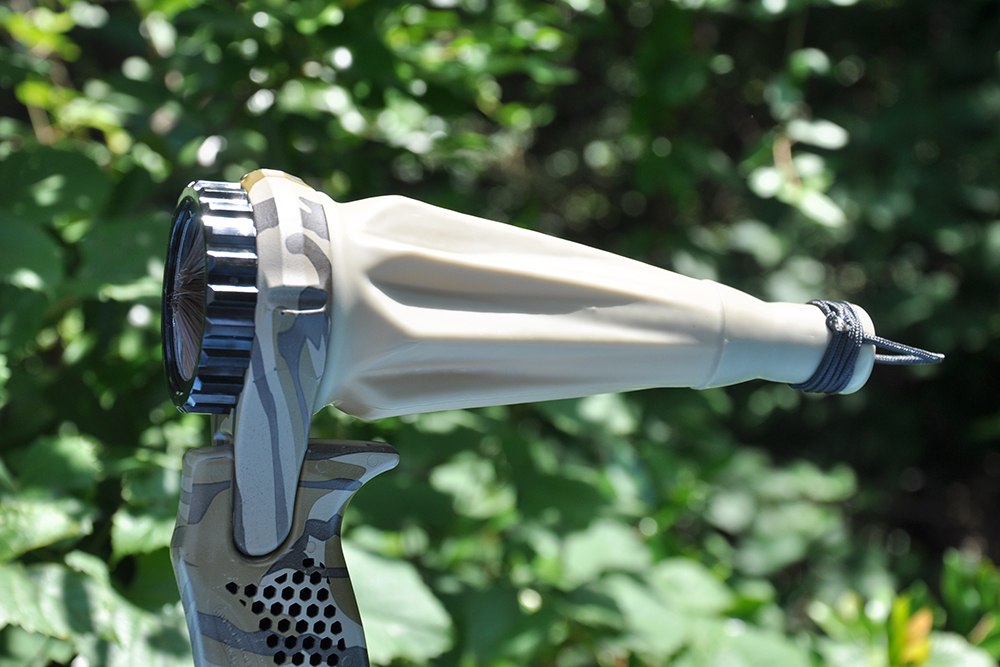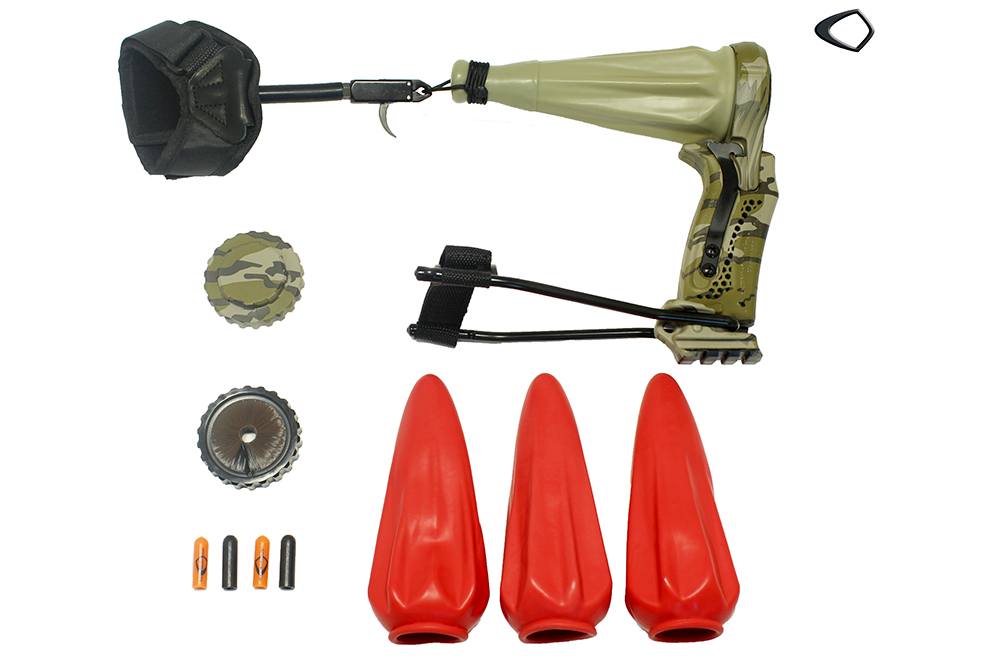SOG Specialty Knives was born from a single cell. Over the past 30 years, it’s evolved into a successful company that’s grown steadily since its founder, Spencer Frazer, designed its first product, a hardworking reproduction of the Vietnam War-era SOG Bowie knife back in the ’80s.
SOG isn’t a traditional knife company. Frazer, and the company he started, has always been a designer, not a manufacturer. He graduated from UCLA with degrees in math and science, then spent years working in the design and R&D fields. His first taste of entrepreneurship was starting a company with a friend making high-tech speakers. He left that enterprise to work on stealth projects behind the top-secret curtain at aerospace contractor Northrop.
Frazer would later find himself in the aisle of a Southern California gun show, indulging his curiosity in Vietnam War-era tiger stripe camo patterns, when he’d come across a knife that would captivate him. The Joint Services Special Operations unit or the Military Assistance Command, Vietnam Studies and Observations Group was a shadowy cousin of our nation’s special operations forces. It was a secret multi-service unit set up to run covert military operations before and during the Vietnam War.
The unit commissioned its own unique knife for its members’ use in the punishing Southeast Asian jungle environment. The SOG Bowie, as it was called, encapsulated the mystery and wonder Frazer came to hold for the unit.

Above: One of the rare, original SOG Bowie knives along with an original SOG Command and Control, Central patch from Frazer’s collection.
This knife ignited his mixture of passion for design, knife-making, and history. The resulting combustion drove Frazer to commission his own take on the SOG Bowie, the SOG S1 Bowie, propelling the growth of a company that would ultimately help usher in a period of innovation in knife-making across the industry.
Wood and leather-clad knives of the time gave way to SOG’s satin finishes, rubber grips, composites, and resin-impregnated materials. SOG’s compound-leverage multitools (inspired by the gears of a child’s toy) and the Arc Lock mechanism for folding knives still hold their own today in a crowded market.
SOG extended an exclusive invite to RECOIL OFFGRID to meet with the company’s founder, Spencer Frazer, to see and hear how the brand has grown from one guy in his pajamas to 50 employees making gear that helps their customers prepare for anything, from the everyday to the grievous. Walking into the company’s headquarters and design studio in Lynwood, Washington, we noticed the very shape of the building displays the reverence for design the company was built on.
Interview with Spencer Frazer of SOG Knives

RECOIL OFFGRID: We noticed the SOG office building has some unique architecture. The peak above your office is reminiscent of a knife blade?
Spencer Frazer: That was my plan from the get-go. At one point, early in the design process for the building, we actually had a piece of steel that was going to hang off the edge of it and we go, “Oh my god, someone is going to run into it, and we’re going to get a lawsuit.” Do you remember the L.A. hot dog place that’s shaped like a giant hot dog, Tail o’ the Pup? I remember reading a story about a woman suing them after she hurt herself after running into the end of the building. So no knife edge on the front of our building. But we did build our own building, and we wanted it to be conceptual. It was ’96, and this was the last wooded lot in Lynwood.
Since you’re not really an architect, was that stressful?
SF: Everything I do has a sense of design and sophistication of design and that’s how I work. Working with the architects, we came up with something that’s unusual, and it won some award for the best build-to-suit in the city because it did reflect exactly who we are. Funny story: I ended up struggling over the paint combinations. I drew parts of the building in CAD and then I colored in the different sections. I worked on that for weeks. So, finally they came in and painted the whole building the base color to start, and it looked like a whorehouse. Instead of a really nice gray, it turned out a fleshy tan. I left that day with a migraine headache going, “We’re ruined. It’s, like, the worst it could ever be.” And there’s four or five colors, so they put the next color on and I go, “It’s horrible.” And, then they put the next color on and I say, “It’s terrible.” And, then they put the final color on and I said, “It’s genius!” Because colors are funny that way — they play off one another and create different perceptions.
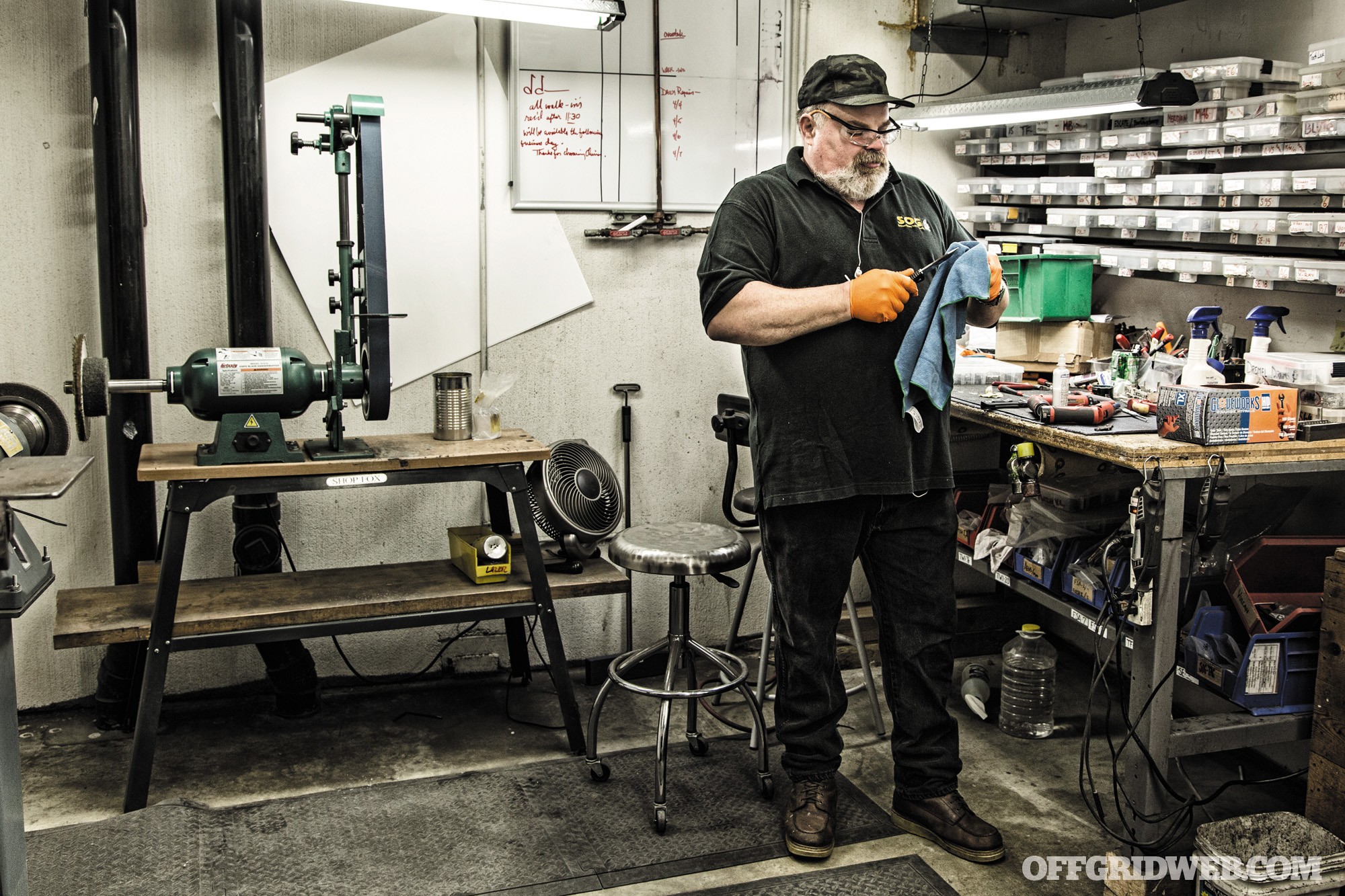
Above: Dave Ditto, repair tech, sharpens knives. SOG welcomes its customers to bring their blades in for a check up and a renewed factory edge.
This wasn’t SOG’s first home, was it? The company began in California?
SF: When we moved up from Santa Monica to Seattle, there were a bunch of reasons. But one was that we — my wife at the time and I — wanted to buy a house and couldn’t afford one in California. This was a pro-business area. So we bought a three-bedroom, 1950s house in Edmunds overlooking Puget Sound. It was a split-level, and we had the business in the basement. We were there several years, and there was one time I realized I was still in my pajamas and it was three days later. You know, I would work all night, maybe take a nap on the couch, but that was when I said, “We’ve got to get an office.” So we found this little office in downtown Edmunds. It was tiny; there was room for a desk, a small table, and some racks. We grew a bit and took over the adjoining space, then we ran out of room and moved down the street, moved again …. We grew out of that and moved downtown to the waterfront and got a legitimate office with a warehouse behind it and stayed there for quite a few years before coming here. That was in Edmunds, at a place called Harbor Point. There was a rat breeding operation next door. When it was hot we could smell the rats through the wall. It was bad.
What’s your favorite product?
SF: The favorite one is always the next one.
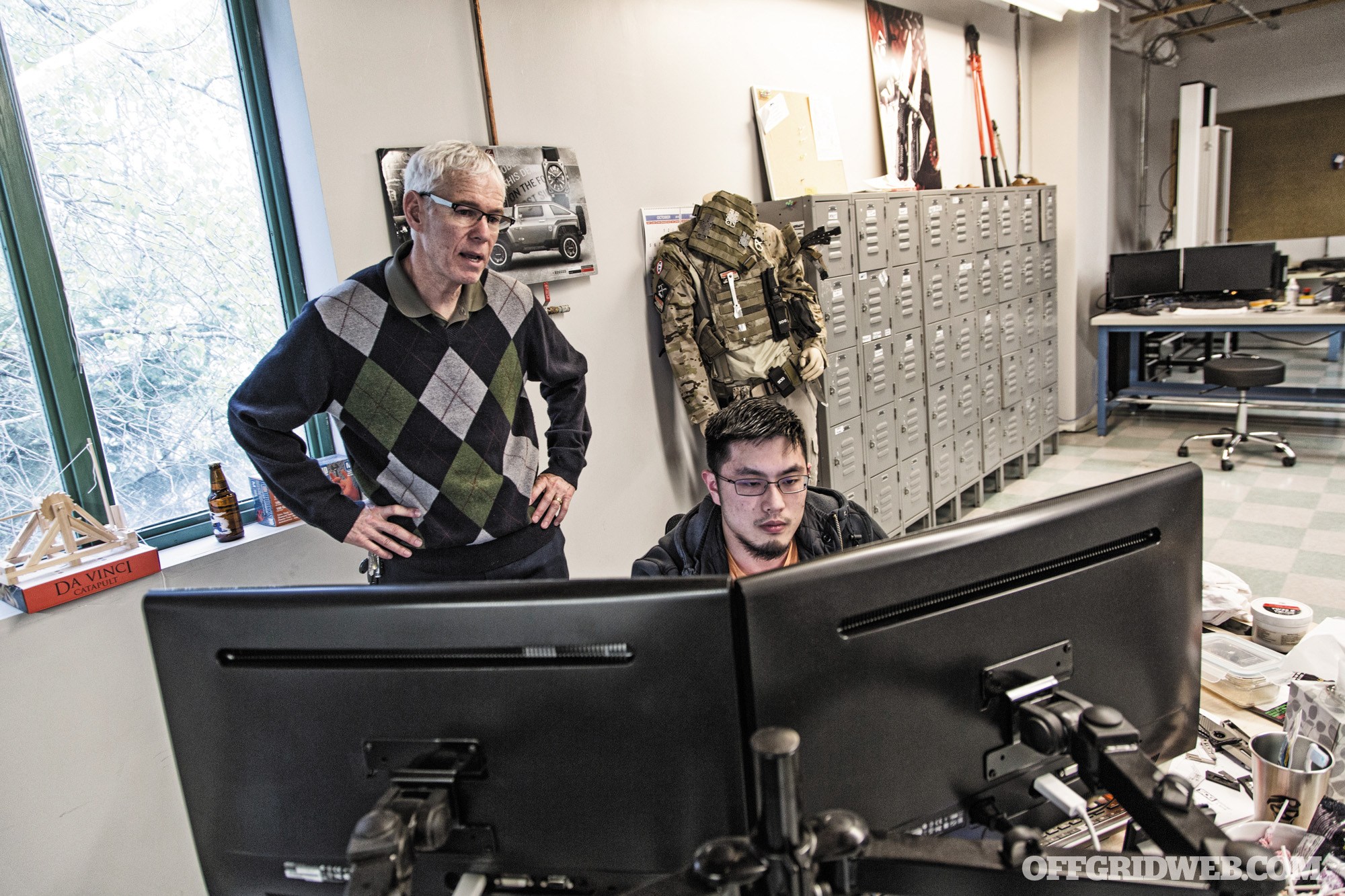
Above: Spencer Frazer, left, and mechanical design engineer Alex Hwang confer over the shape of a new product. SOG’s knives and tools are designed, prototyped, and tested in Lynwood, Washington.
Have you been emotionally attached to any particular product?
SF: Most of them. They’re my children. Especially the early days when it was just me designing them and putting them in the marketplace, creating a story about them and having them sell. It was an amazing experience. I’m still very charged up about that. I love designing, but I love designing where it’s accepted in the marketplace and ultimately rings the cash register. And that was a focus of mine early on, and it kind of separates me from a lot of designers who are pure designers. How do I make something successful and sellable? I developed a pretty good sense of what would work and what wouldn’t. Over the years, we haven’t had that many dogs.
What product taught you the most?
SF: The original Team Leader. It was our first folder. It was based on the SOG Bowie, and we wanted it to be kind of like a yawara stick. It’s symbolic in that it has the bolster and the guard, kind of, and the big Bowie blade. It’s just a monster. I wasn’t sure about it, and I was working with another guy at the time. We were working with Japan, and they misinterpreted the drawings and scaled it up a bit, too. It was a boat anchor. I think we sold something like 350 of them. I sent it to Cutlery Shop, who was pretty astute at knives, and he said to me, “That’s just terrible.” And he was right. It was too big and weighty. But that’s the thing, now — big knives. Now it’s highly collectable.
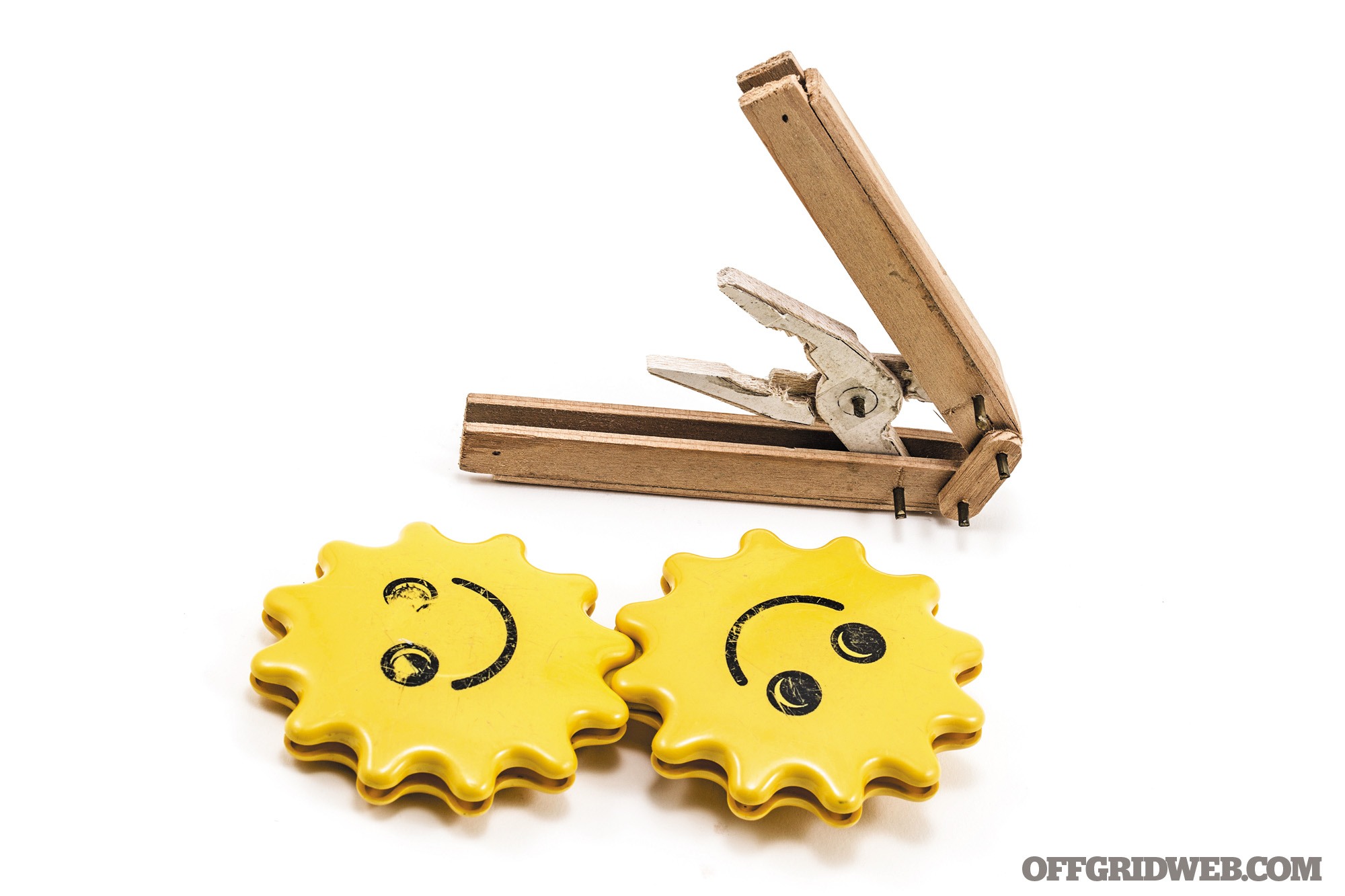
Above: The original wooden prototype showing SOG’s patented compound leverage hinge system that came to Frazer as he watched the gears of this child’s toy spin together.
Tell us about the SOG Bowie.
SF: The SOG Bowie was the origin. When I first saw that knife, I was just taken by it. It was a magical thing. I first saw it at the gun shows. I used to go to the gun shows pretty regularly. I was collecting Vietnam-era tiger stripe prints. They were all hand silk screened, so it became this art form that I was intrigued by. I didn’t serve; the draft ended on my 18th birthday. So there are all these different types of uniforms and patterns for triple canopy, the marshlands, you know, and they are all different. I was in my late 20s in the early ’80s.
I was fascinated by tiger stripes, and they helped me discover SOG; the Studies and Observations Group, or Special Operations Group. It was a fascinating time in military history. These guys could pretty much do whatever they wanted, and they created their own equipment, their own uniforms, knives, everything. The coolest thing to come out of SOG, and I’ve been looking for one, was a dog turd seismic sensor. They put them on the Ho Chi Minh trail, and they could tell from the air if anyone was walking on the trail. But that I never got. I’ve seen very few references to it.
But when I saw the original SOG knife … it’s so historical, it’s got such provenance and soul. Where was it, what did it do?

So were you into knives from a young age?
SF: You know, knives make us feel good; they make us feel prepared and competent. They make us feel cool. I liked knives from when I was young but hadn’t really thought about them; I wasn’t really a collector or anything. And then years later I saw the SOG Bowies and began collecting them. There were these plum ones. They were an accident; bluing gone bad. English browning, they call it sometimes. So, that was rare, and had about 10 or 14 other ones. There were a lot of counterfeits, so I wasn’t sure about some of them, so I started researching them. You couldn’t find any historical information about them — nobody really knew who made them.
So, you decided to make a replica of the original SOG Bowie knife, your first product, the S1 Bowie?
SF: The big thing was how do we manufacture this and where. So, I started doing research, reading Blade Magazine. I saw this guy, Beau Randall, in Florida. He was one of the famous custom knife-makers and had semi-production. He’s still making knives today, and he’s back-ordered four years. So, I called him up and said I want to reproduce this knife and he said he could reproduce it if I wanted to give him an order for, like, a couple hundred. I said, “How fast could I get them?” And, he said, “Well I could start delivering them in about … four years.” That wasn’t going to work.
So, he tells me to call up this good old boy in Arkansas named A.G. Russell because he’s got ways to produce things. So, I call him up; a legend in our business. He started the knife-makers guild and has been around forever; one of the authorities on knives in the world. He says, “I know some people in Japan.” And, that’s how we met Bob Nanri, a sort of [knife manufacturing] agent, and got started in Japan.
Bob Nanri had this idea to create a quality [knife] market out of Japan. Up until then Japanese goods were considered junk. Cars from Japan were, like, junk metal back then. But, Japan had an incredible history with samurai swords and steel making, so he was right to do it, and he single-handedly created a high-end market for Japanese cutlery.
So, we got in with Mitsuboshi Cutlery, in Seki City, Japan, that used subcontractors. They gave us Hattori Hamono, one of the most famous knife-makers in Japan. And Hattori Hamono told me his father had been the original producer of the Vietnam SOG Bowie! So it was very serendipitous that we found through this circuitous effort one of the original factories that produced those old knives.
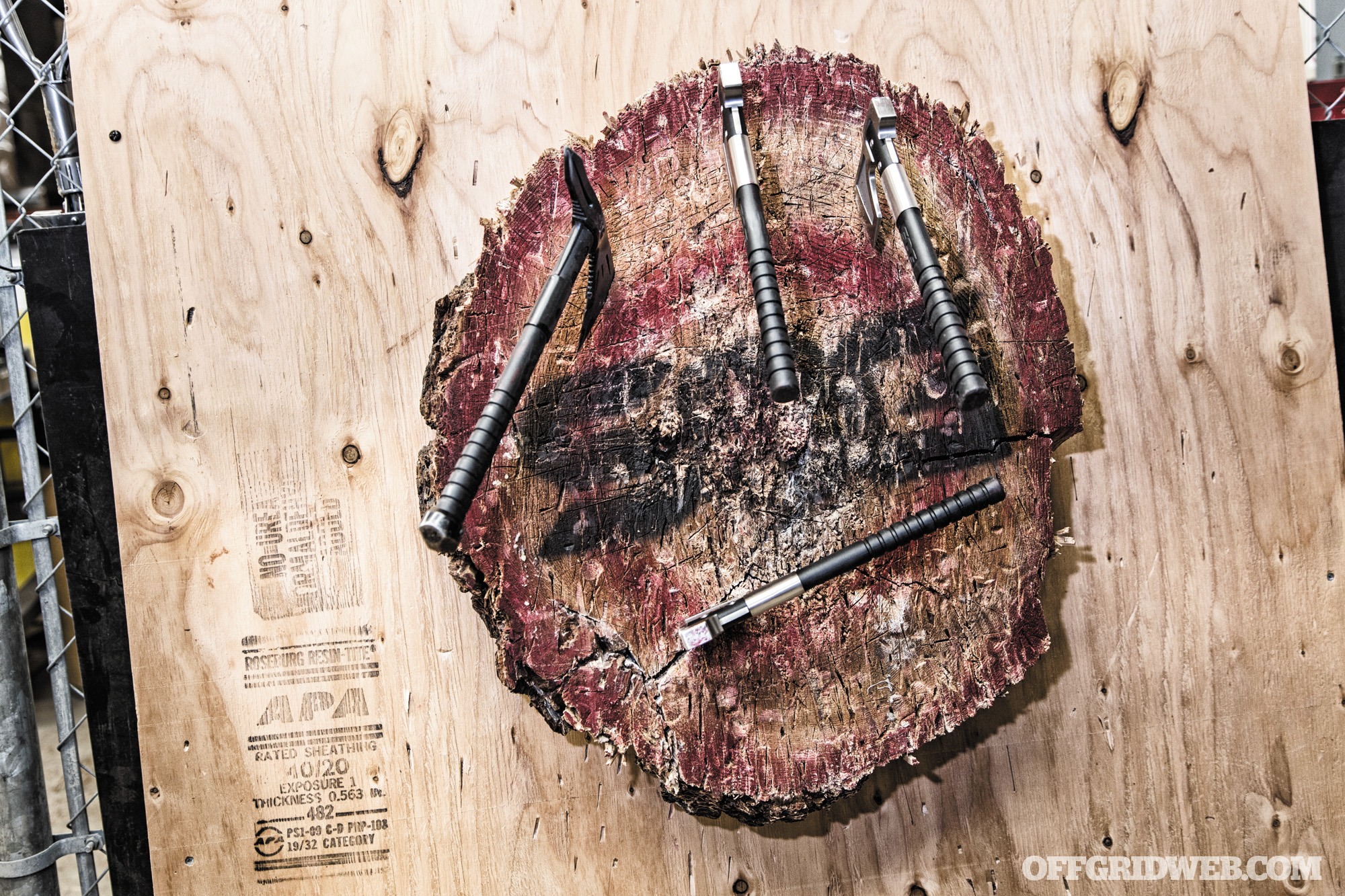
What was it like starting the company?
SF: I date myself, but it was so different running a business back then. Information was hard to come by and communication was difficult. In the beginning, when we worked with Japan, I would send them a letter to ask them a question. It was like, “Can you shorten this knife by a quarter inch? Here’s my sketch.” So, it’d take two weeks to get there, they’d answer, and it’d take two weeks to get it back. Then Bob Nanri, said there’s this new invention called the fax machine. He said, “You use this thing, and you send a message and get an answer back within a short period of time.” I asked how much it cost, and he said it was like $850. My God, this was in the late ’80s, so that’s like $8,000 today. But, I got one.
Did you ever learn about the origin of the SOG Bowie?
SF: There’s an article about it by Greg Walker, a writer and an old friend of mine. He found Ben Baker. He was a quartermaster or something in SOG or Special Forces. Greg found the original guy somehow, who had never wanted to talk about the project because he felt he was still under some kind of secrecy requirement. But, Greg got him to talk and he pulled out all the original data. Greg calls me and says, “You’re not going to believe it, but I found the original guy. He has all the drawings and some of the original knives.” Then we really found out the numbers of different versions of the original knives there were.
Baker took, I think, the Bowie, the KA-BAR, and the Randall and he incorporated different design features into the knife that he felt were best for [his unit’s] application. There was some science in developing the different style of blade. He did a lot of meat testing, you know cutting, penetrating, twisting, and stabbing.
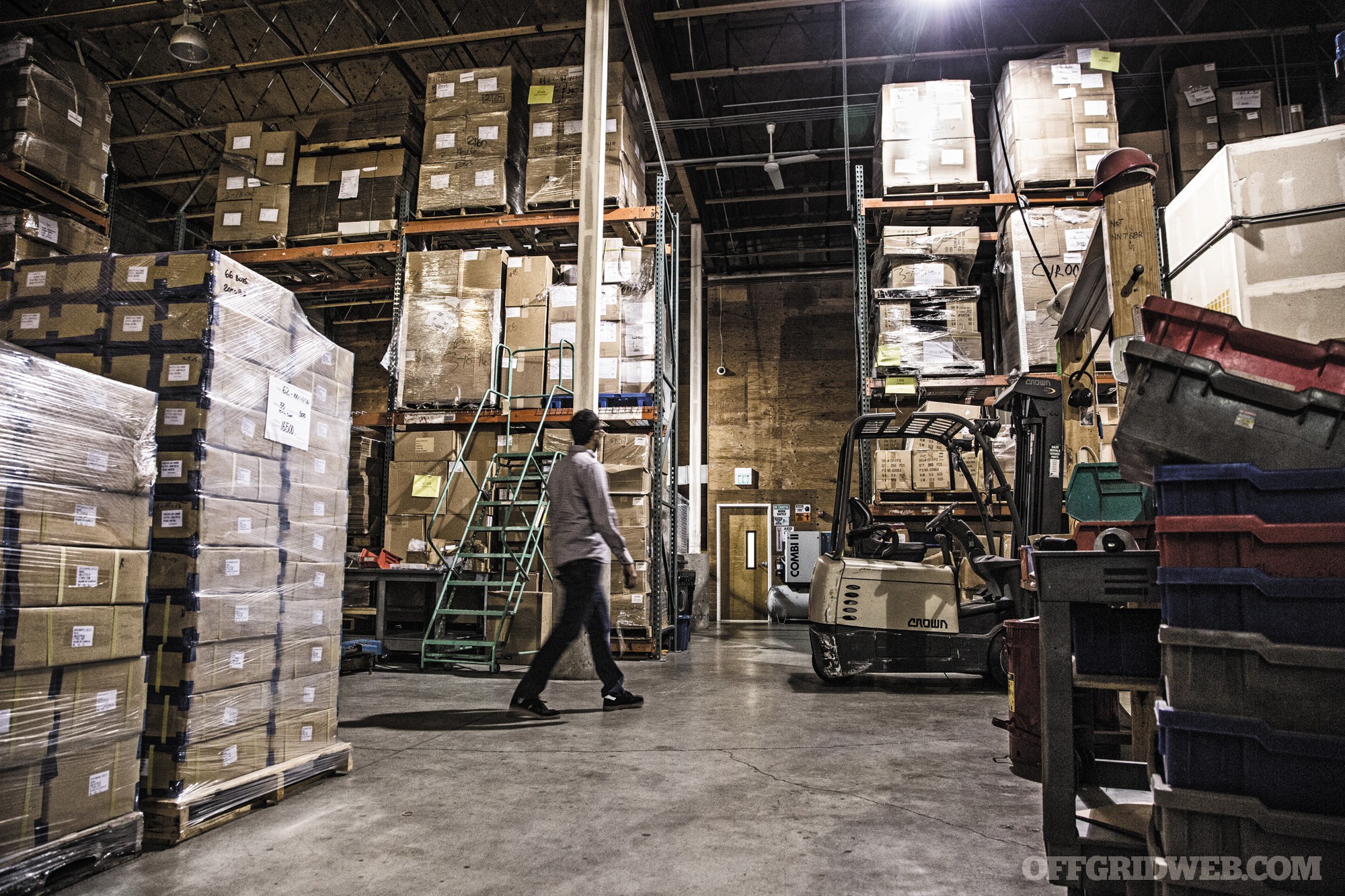
Have you ever gotten into the politics of knives?
SF: There are two organizations. American Knife and Tool Institute — which is more of an industry group — we’ve been a big supporter of for 15 years or so, and our CEO is a member of the board. Then there’s Knife Rights, more of a consumer group. We support them as well. I was part of the contingent that went to Washington when we changed the federal laws for one-handed knives, which was something we never dreamt could ever be done.
When Congress added “the bias toward closure” language to the Federal Switchblade Act, it became the new definition of a switchblade. At that point, we were worried that all one-hand openers were going to be switchblades. And there are now more than 30 states where you can possess switchblades. We are working with AKTI and Knife Rights who are working to rewrite knife laws and add preemptive laws at the state level.

Spencer Frazer, SOG Knives founder and chief designer
You’re careful to point out you didn’t serve in the military. Is it difficult being an aficionado? How do you maintain brand authenticity without going over the line in your marketing?
SF: It’s something I was cognizant of from the beginning. For one, we never said we were anything we weren’t. We were honest about it. I think that’s what helped us get through it. I remember one time this Navy SEAL guy came up to our table at a Soldier of Fortune show and he was looking at one knife we named the Trident. He was really upset about it. He says, “How can you take something that is so key to who we are when you’ve never been there or done that.” And then later was another incident when a SEAL plank holder came to us and was really upset about the Trident name, but it turns out it was because he wanted to use that name on a knife of his own. We always did straight business. We were trying to do justice by the guys who had been there. I wanted to create a great product that was a tribute, and that was our intent and it carried through, even all the way to today.
More From Issue 17
Don’t miss essential survival insights—sign up for Recoil Offgrid’s free newsletter today!
Read articles from the next issue of Recoil Offgrid: Issue 16
Read articles from the previous issue of Recoil Offgrid: Issue 18
Check out our other publications on the web: Recoil | Gun Digest | Blade | RecoilTV | RECOILtv (YouTube)
Editor’s Note: This article has been modified from its original version for the web.











